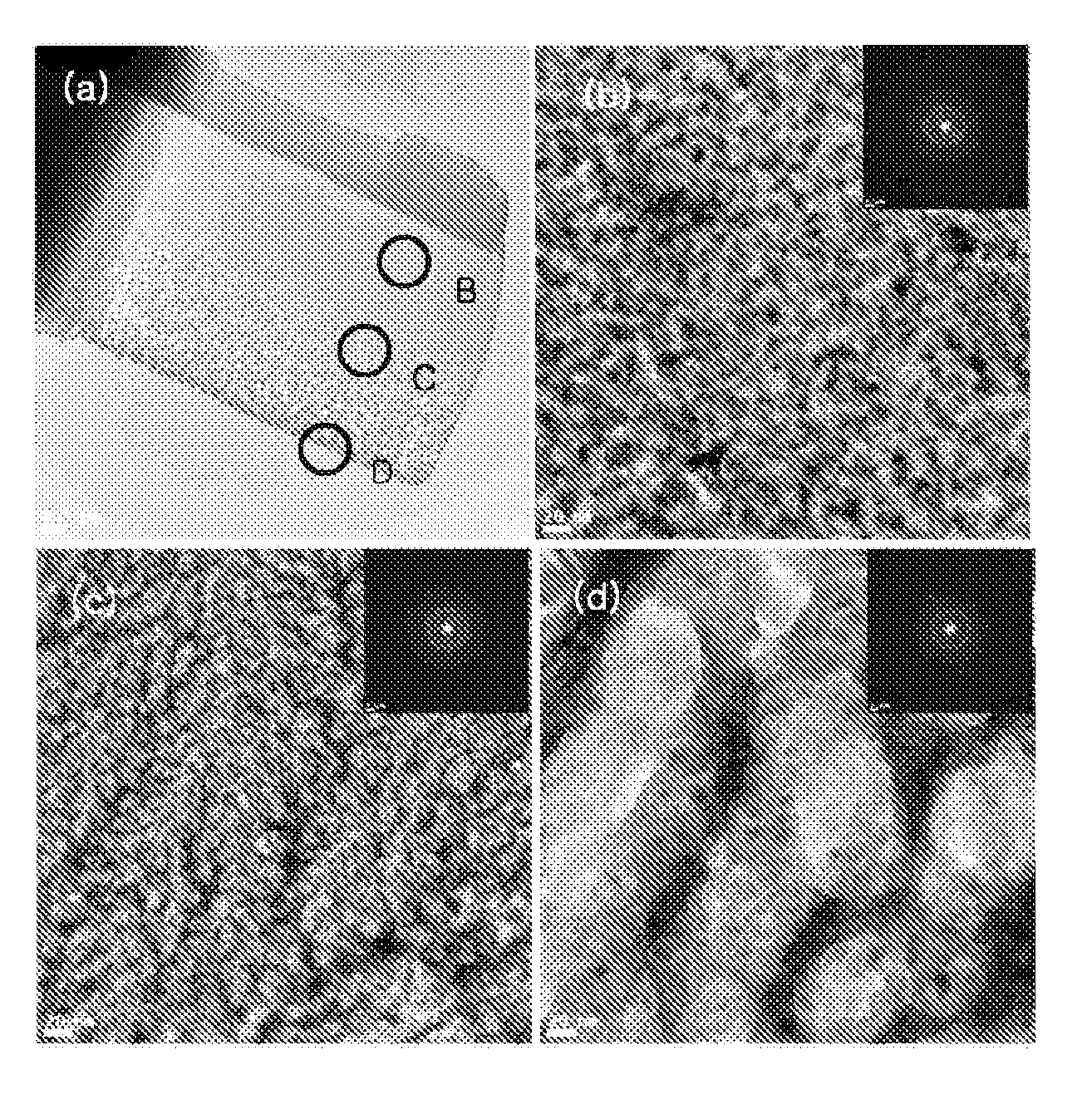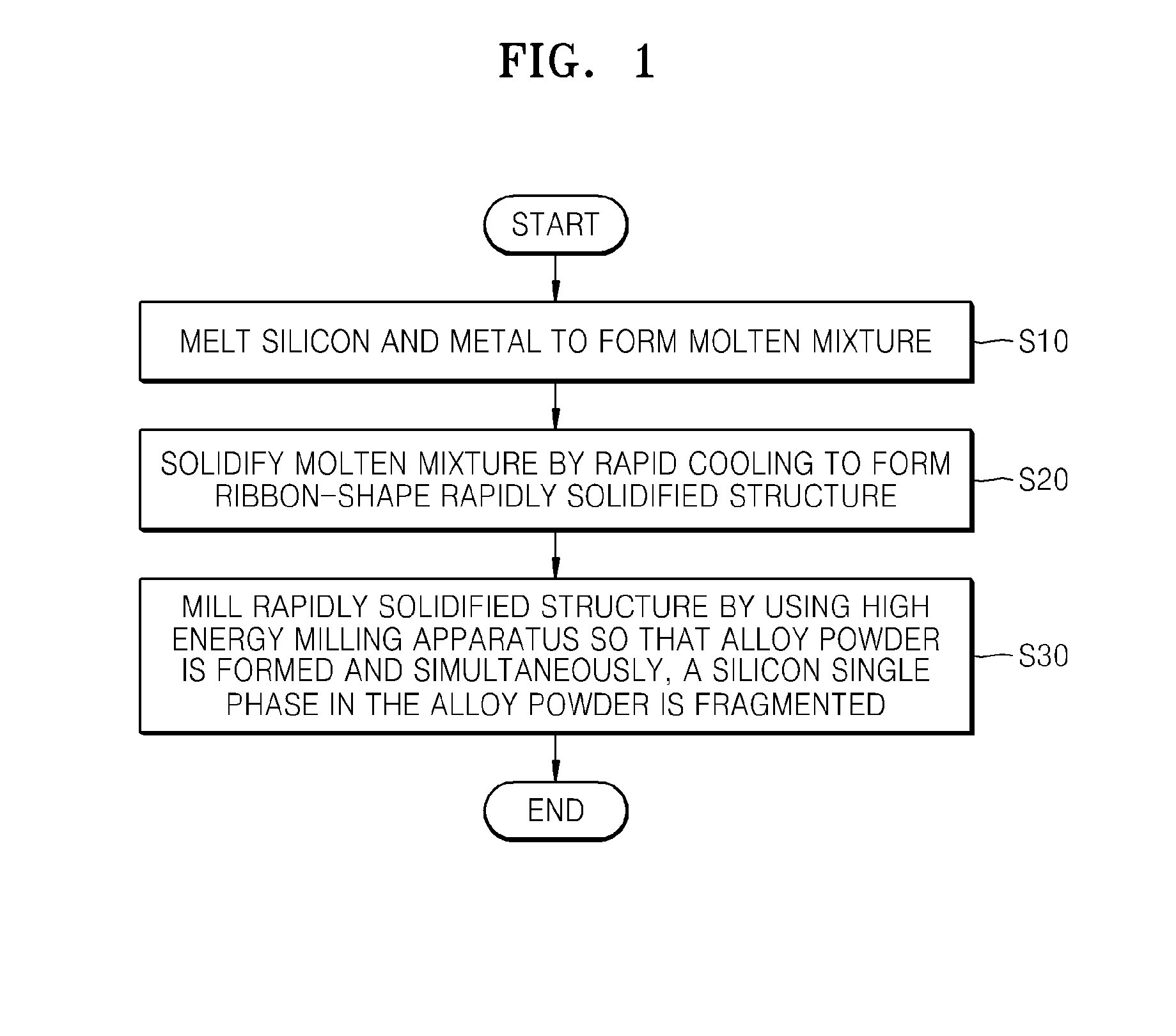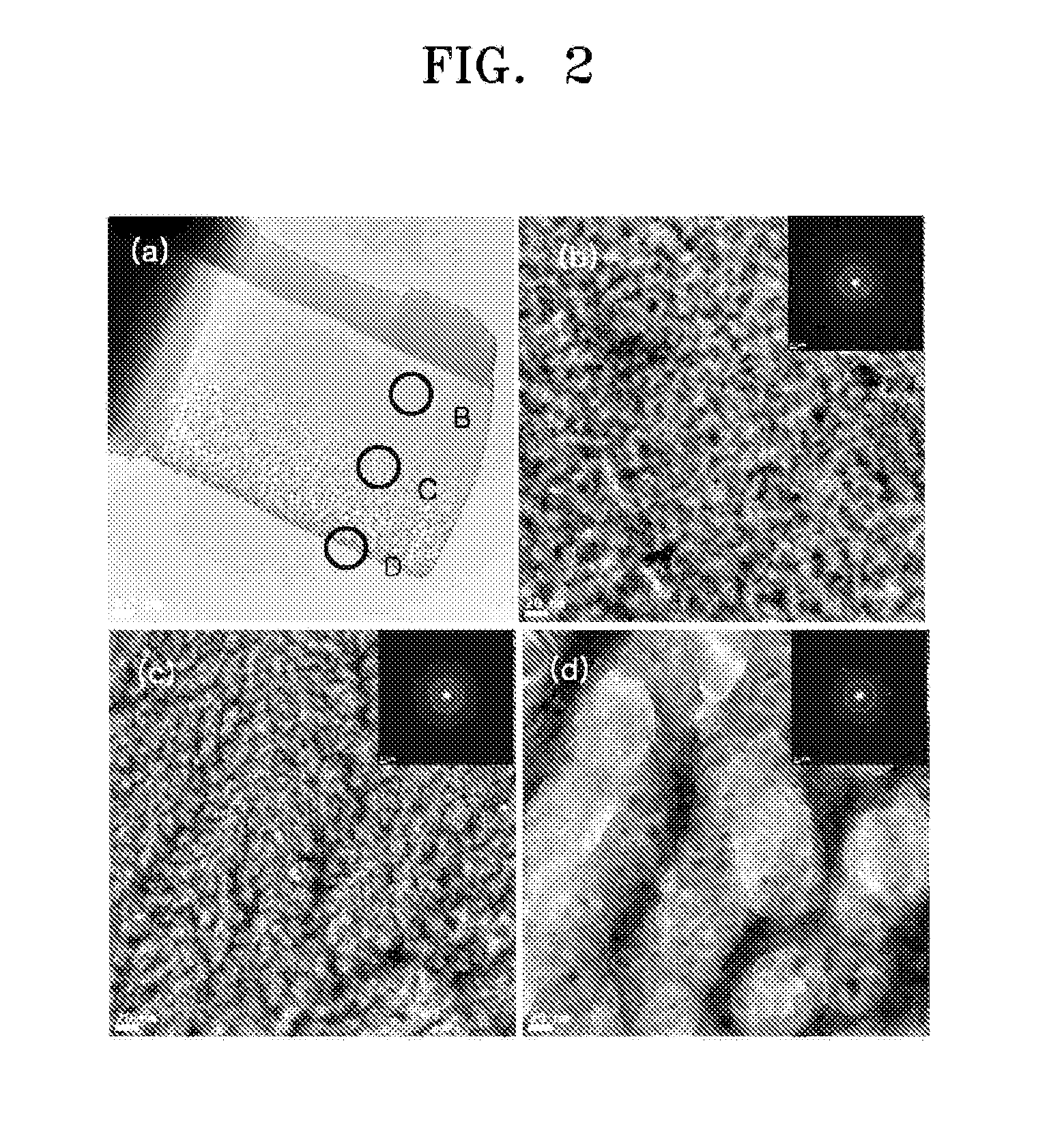Negative active material for secondary battery and method of manufacturing the same
a secondary battery and active material technology, applied in the field of secondary batteries, can solve the problems of deterioration of cyclic characteristics of an electrode including si, sn, sb, and increase or decrease of volumetrics, and achieve high capacity and high efficiency charging and discharging characteristics
- Summary
- Abstract
- Description
- Claims
- Application Information
AI Technical Summary
Benefits of technology
Problems solved by technology
Method used
Image
Examples
Embodiment Construction
[0029]The present inventive concept will now be described more fully with reference to the accompanying drawings, in which exemplary embodiments of the inventive concept are shown. The inventive concept may, however, be embodied in many different forms and should not be construed as being limited to the embodiments set forth herein; rather, these embodiments are provided so that this disclosure will be thorough and complete, and will fully convey the concept of the inventive concept to those of ordinary skill in the art. In the drawings, the thicknesses of layers and regions are exaggerated for clarity. As used herein, the term “and / or” includes any and all combinations of one or more of the associated listed items. Through the specification, like reference numerals denote like elements. Furthermore, in the drawings, various elements and regions are schematically illustrated. Accordingly, the inventive concept is not limited to the relative sizes and intervals illustrated in the att...
PUM
| Property | Measurement | Unit |
|---|---|---|
| size | aaaaa | aaaaa |
| size | aaaaa | aaaaa |
| grain size | aaaaa | aaaaa |
Abstract
Description
Claims
Application Information
 Login to View More
Login to View More - R&D
- Intellectual Property
- Life Sciences
- Materials
- Tech Scout
- Unparalleled Data Quality
- Higher Quality Content
- 60% Fewer Hallucinations
Browse by: Latest US Patents, China's latest patents, Technical Efficacy Thesaurus, Application Domain, Technology Topic, Popular Technical Reports.
© 2025 PatSnap. All rights reserved.Legal|Privacy policy|Modern Slavery Act Transparency Statement|Sitemap|About US| Contact US: help@patsnap.com



